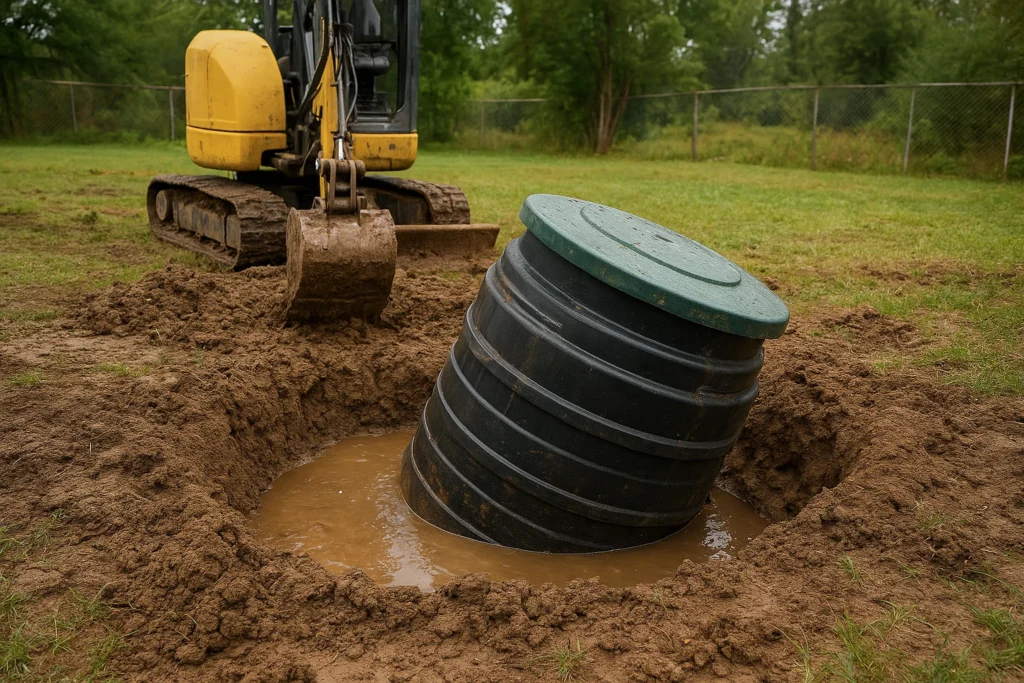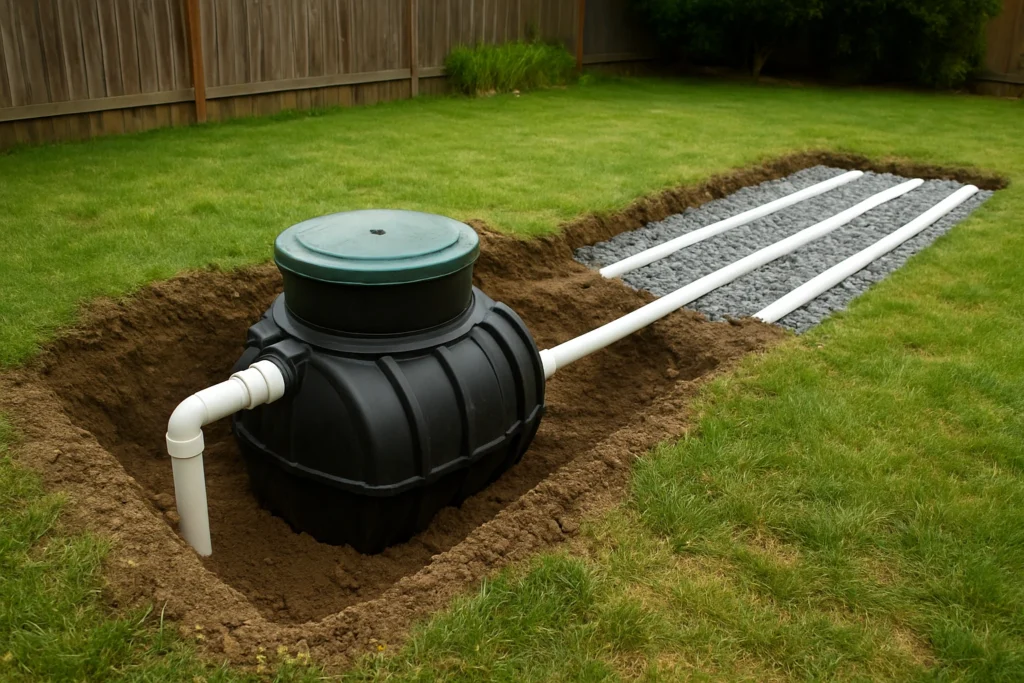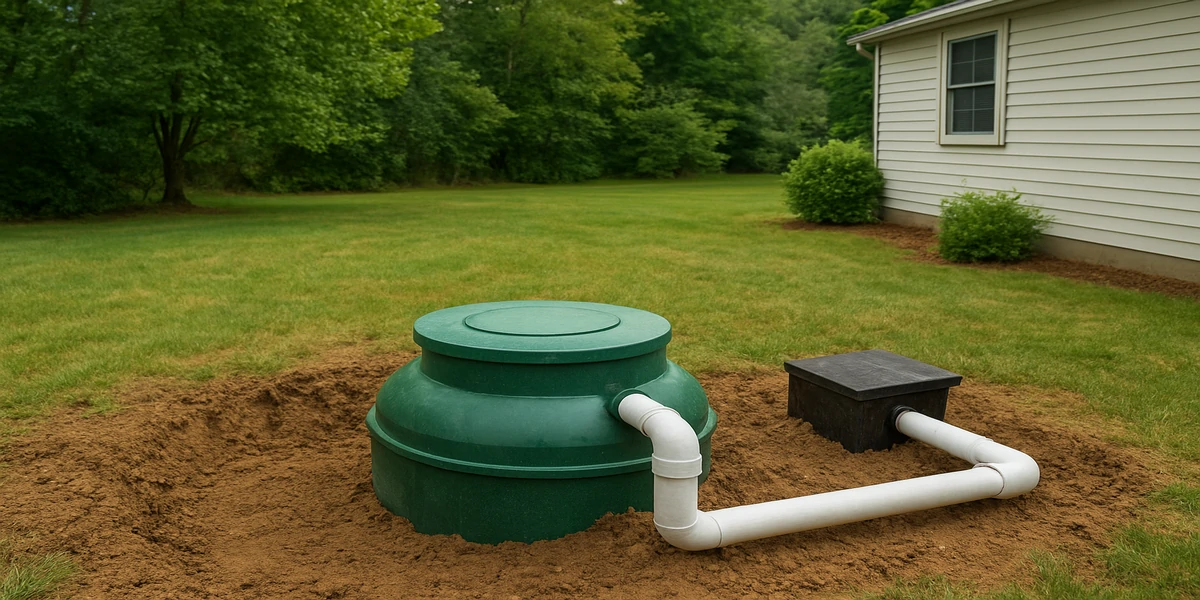When I first messed around with the idea of putting in a small septic system on my homestead, I thought it was gonna be easy. Dig a hole, drop a tank, run a pipe, done. Oh boy… if only. Truth is, that little project nearly broke my back, my shovel, and my patience. But ten years later, after some nasty smells, one frozen pipe, and a tank I had to dig up twice (don’t ask, I’ll get there), I can finally say I kinda know what I’m doing.
And if you’re thinking about getting a small septic system for your backyard, cabin, or little homestead, lemme tell you what I learned both the good and the ugly.
Why I Even Wanted a Small Septic System
One of my first summers out here, I was hauling buckets from the outhouse to a compost pile and pretending I was fine with it. Truth? I wasn’t. My wife hated the smell, my kids refused to go near it, and I started dreading the whole thing. I needed something more “normal,” something that flushed like a real bathroom but didn’t cost me $20,000 like the big fancy systems contractors around here sell.
So picture this: I rented a mini-excavator, thought I was hot stuff, and dug a hole for my plastic tank. The hole looked good. Dropped the tank in, backfilled around it with dirt, hooked up the pipes, and called it a day. Next morning? The tank was floating. Yep, rainwater filled the hole overnight and pushed that sucker right up out of the ground.
That’s when I stumbled on the idea of a small septic system. Basically, it’s just a downsized version of the real deal: a tank that holds the waste, and a drain field or leach line that filters water back into the ground. Simple enough… until you actually build one.
My First Disaster (Don’t Copy This)
Lesson learned the hard way: you can’t just drop a tank into a muddy hole. You gotta bed it in gravel, anchor it, and make sure water can’t collect underneath. That mistake cost me a weekend, a bruised ego, and a six-pack for my buddy who came to help me dig it back out.

What Finally Worked for Me
After that mess, I slowed down and actually paid attention. Here’s what I did that finally worked:
- The Tank – I went with a 1000-gallon plastic tank, which is a common size for a small septic system. Honestly, it’s overkill for just me, my wife, and the kids, but I’d rather go big than dig it up later.
- The Hole – This time I lined the bottom with crushed stone, about 6-8 inches, to keep it solid and drain water away.
- The Pipes – Don’t cheap out here. Schedule 40 PVC, glued tight. My first try with thin pipe cracked when the soil shifted.
- The Leach Field – I ran about 60 feet of perforated pipe out from the tank, bedded in gravel, wrapped in landscape fabric to keep roots out.
And you know what? This one actually worked. No float, no cracks, no smell. For once I felt like I knew what I was doing.

The Ups and Downs of a Small Septic System
The Good Stuff
- You can flush like a normal person. No outhouse stink, no arguments with the kids.
- It’s off-grid friendly. No pumps, no electricity, just gravity and good soil.
- Way cheaper than a full system. I spent maybe $3,500 total, counting the excavator rental.
The Not-So-Good
- You still gotta pump it out every few years. Don’t skip this unless you like sewage backing up into your shower.
- If you live where it freezes hard, those pipes can crack if you didn’t bury them deep enough. Trust me, crawling out with a headlamp at midnight in January to thaw a pipe is not fun.
- Neighbors (or inspectors) might raise eyebrows if you didn’t pull permits. I’m not saying you should skip them, just… people do.
What I’d Tell My Younger Self Before Starting
If I could go back, I’d say: “Slow down, dummy. Don’t think you’re smarter than the ground.” Soil type matters a lot. Sandy soil drains fast (sometimes too fast), clay soil holds water (too much), and rocky soil… well, it’ll break your shovel before anything else. Get a soil perc test done if you can. I didn’t the first time, and my leach lines just sat there like a swamp.
Another big one plan the location. I once put a leach field downhill from my chicken run. Guess what? Chickens and septic water don’t mix well. Took me two summers to fix that mess.
How Small Is “Small” Anyway?
A lot of folks ask me, “What’s the smallest septic system I can get away with?” Well, it depends on how many people and how often you’re using it. For a tiny cabin or hunting shack, I’ve seen people use tanks as small as 300 or 500 gallons. For a small family house, 1000 gallons is kinda the baseline. The smaller you go, the more often you’ll need to pump.
I’ve got a neighbor with a little weekend cabin he went with a 500 gallon tank. Works fine for his family since they’re only out there once or twice a month. But if you’re living full time, go bigger. Nothing ruins your morning coffee like sewage bubbling up in the yard.
My Top 5 Tips If You’re Thinking About a Small Septic System
- Don’t skimp on gravel – It feels silly buying so much rock, but it keeps everything stable.
- Keep trees far away – Roots love septic pipes like kids love candy.
- Mark your clean-out – I buried mine once. Took hours to find when I needed it.
- Vent the system – Otherwise, you’ll get smells in the house. A simple roof vent works fine.
- Pump it on schedule – Every 3–5 years is standard. Don’t push your luck.
A Funny Story (Now That It’s Over)
One time, during my second attempt at backfilling around the tank, I was rushing to finish before a storm. My buddy Joe leaned on the pipe while joking around, and snap broke the inlet clean off the tank. I wanted to strangle him, but really it was my fault for not gluing and securing it first. We spent the next three hours in the rain, covered in mud, patching that thing. Looking back, it’s funny… kinda. But at the time, man, I was steaming.
Mini FAQ (The Stuff I Get Asked Most)
Q: Can I build a small septic system myself?
A: Yep, but only if it’s legal where you live. Some counties won’t let you touch it without a permit.
Q: How much does it cost?
A: Mine was around $3,500. I’ve heard folks do it for $2,000 with scrounged materials, but it depends on your soil and setup.
Q: Can I hook my gray water to it too?
A: Yeah, but I actually run my laundry water to a separate mulch basin. Saves space in the tank.
Wrapping It Up
Building a small septic system was one of the hardest and most useful projects I’ve done on the homestead. It wasn’t perfect, I screwed up plenty, and I still worry sometimes about roots or frost. But at the end of the day, I’ve got a bathroom that works off grid, without power, and without costing me a fortune.
If you’re thinking about it do your homework, plan ahead, and don’t rush like I did. Trust me, the smell of a backed-up septic pipe is not something you wanna deal with twice.
Got a weird question? Drop it in the comments, I actually answer. And hey, if you mess it up, don’t feel bad I probably already did the same mistake years ago.

